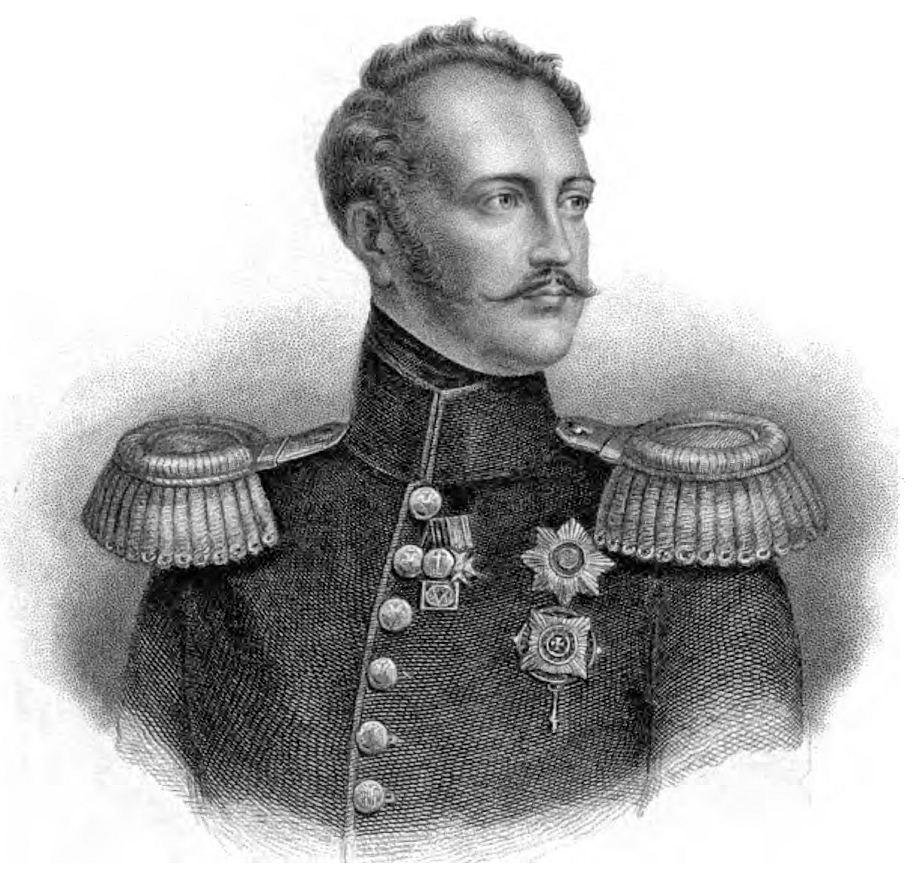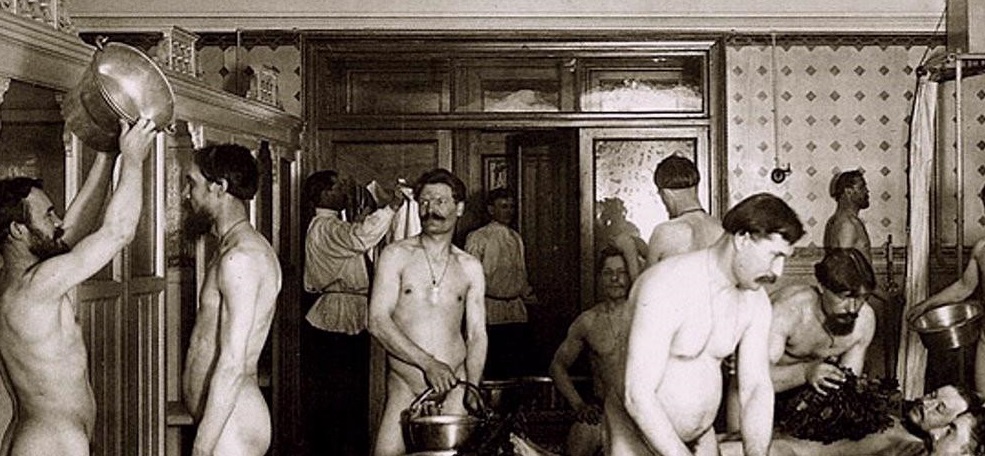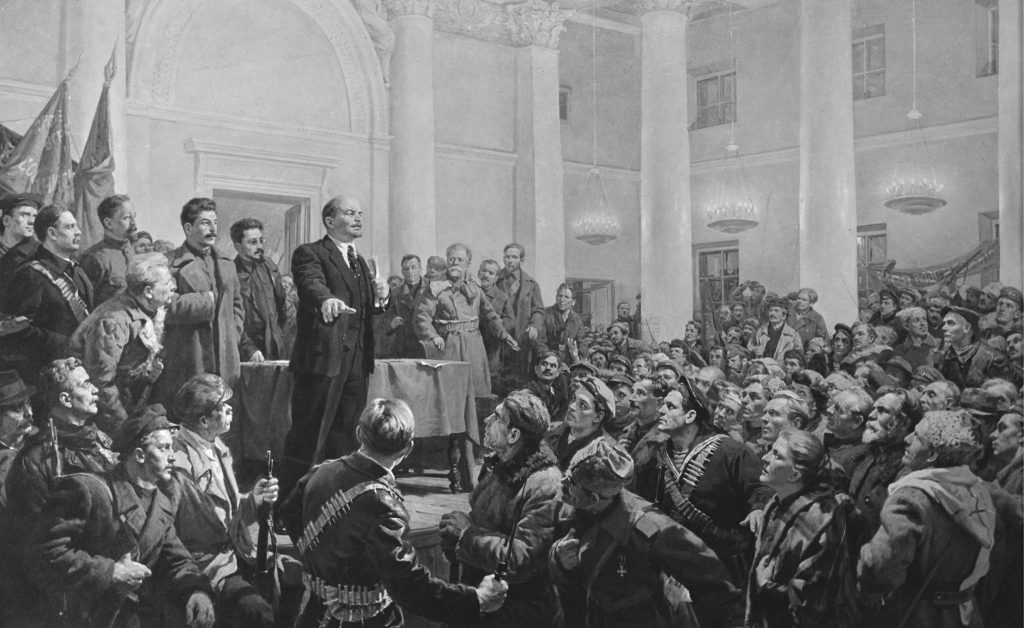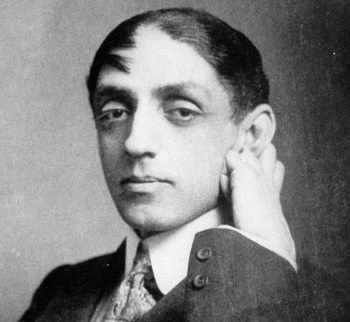The October Revolution radically changed the situation for homosexuals in Russia, as it did for women. In 1922 the first criminal code of the Russian Soviet Federative Socialist Republic (RSFSR) was passed as law. In 1918 all the old Tsarist laws were suspended and when finally, after a few years of debate, the new constitution was adopted, homosexuality or “sodomy” as it was called, was decriminalised. This was an enormous advance for homosexuals, who under the Tsar could be arrested and sentenced to years of imprisonment or sent to labour camps.
Some reactionary historians, with the clear intent of denying the Bolsheviks recognition for such advanced legislation, claim that this was an oversight rather than a conscious decision. This claim does not stand up to a close examination of how the 1922 Penal Code was drafted, which reveals discussion and debate over the question and a conscious decision to decriminalise homosexuality. This was the case until 1933-34, when the Stalinist regime decided to recriminalize homosexuality and impose severe sentences on homosexuals.
However, it is also true that much mystification and mythology has been introduced in left-wing accounts, which depict post-revolutionary Russia as some kind of gay paradise. This rewriting of events, through the lens of contemporary attitudes, fails to situate the matter historically. We will attempt to outline the real context in which the Bolsheviks decriminalised homosexuality.
[Note: the terms ‘gay’ or ‘homosexual’ are used here rather than LGBT, as the term did not exist in that period. Also, we are dealing here mainly with the specific decriminalisation of male same-sex activity. Same-sex relations between women had never been criminalised and were therefore not decriminalised either. We will deal with this in another article.]
Homosexuality under the Tsars
Under the Tsarist regime, homosexuality had been considered a crime for almost a century. The first prohibition of male same-sex relations in the army was imposed by Peter the Great in 1716. In 1835, under Nicholas I, this was extended to the civilian population. Consensual homosexual relations became punishable with exile to Siberia and this legislation remained in place until the October Revolution in 1917.
 Homosexuality was criminalised for Russian civilians by Tsar Nicholas I in 1835 / Image: public domain
Homosexuality was criminalised for Russian civilians by Tsar Nicholas I in 1835 / Image: public domain
Despite the wishes of Nicholas I, homosexuality obviously could not be legislated out of existence. Being a natural variant of human sexual relations, it could be repressed but not removed from society. It thus remained a half-hidden phenomenon, with several places where it could find expression. Among these were the public bath-houses, where male prostitution was common. The irony of the situation was that many men belonging to the upper and middle classes were homosexual or bisexual. Some would marry and live an apparently ‘normal’ family life but seek same-sex love in places like the public bath-houses.
Towards the end of the 19th century, as capitalism began to develop in Russia, the major cities began to expand, and with this there also came an urban homosexual subculture. And while homosexuality continued to be criminalised, psychiatrists began to look at the phenomenon from a medical point of view rather than a moral one, influenced by developments in this field in Europe. Some sections of the scientific community believed homosexuality should be treated as a psychopathological or biological illness the rather than a crime. Homosexuality was not regarded as a natural variant of human sexual activity, but this nevertheless represented a shift away from criminalisation.
Psychiatrists began to develop the idea that homosexuality could be explained as a ‘perversion’, due to a deformed sexual development provoked by inadequate upbringing. Flowing from this, the idea developed that homosexuality could be ‘cured’ through psychotherapy and even hypnosis. A corollary to this was the idea that paying careful attention to the development of children could avoid the emergence of homosexual ‘deviations’.
 There was a gay subculture in Russia prior to the revolution, congregated around bathhouses like this one in Saint Petersburg (photographed in 1910). There was a lot of class bias in the application of the law / Image: public domain
There was a gay subculture in Russia prior to the revolution, congregated around bathhouses like this one in Saint Petersburg (photographed in 1910). There was a lot of class bias in the application of the law / Image: public domain
A small minority went much further and began to see homosexuality indeed as a natural variant. Ushakovsky – apparently a pseudonym – in a text published in 1908, People of the Intermediate Sex, stated:
“The law should protect children and the insane and forbid all manner of assaults. But that which two adult persons, in their own room, do with their bodies by mutual consent and causing no harm does not concern the state.”
This idea, which at the time was held only by a small minority (also reflected in the anonymity of the author, considering the then illegal status of homosexuals) was to emerge after the October Revolution in Bolshevik policy concerning same-sex relations.
In the last period of the Tsarist regime, there was a significant increase in the number of homosexuals being convicted by the courts. There was also much hypocrisy in the application of the law, with members of the upper classes receiving much more lenient treatment. Those in high places who knew the right people could get strings pulled to have their cases ignored. Several homosexual members of the royal family, for example, had proceedings against them halted.
The effect of revolution
The 1905 Revolution had an impact on the way homosexuality was dealt with. And despite the increased number of convictions of homosexuals, there was a certain softening on the question. There was less censorship after 1905, and in these conditions figures like Mikhail Kuzmin (an openly gay writer and poet) could emerge. Kuzmin is considered the first novelist to depict a gay man coming out, in Kryl’ia (Wings), published in 1906. There are also Kuzmin’s diaries which, among other things, depict the everyday life in a gay household, both under the Tsarist regime and later under Soviet rule. There was in fact a flourishing of sex-themed literature after the 1905 Revolution. In the same period, Lidiya Zinovyeva-Annibal published her Thirty-three Monsters, which is a story of lesbian love.
Kuzmin viewed the October Revolution with sympathy, as did many writers and artists. He became a member of the Presidium of the Association of Artists in Petrograd, together with writers such as Alexander Blok and Vladimir Mayakovsky. He also worked as a translator under Maxim Gorky and was one of the founders of a new daily publication, The Life of Art, in 1918, working as one of its editors. These are not unimportant details. Here was an individual who lived as an openly gay man, who was highly respected in the early period of the Soviet Union – that is, before the Stalinist counter-revolution consolidated its grip on society.
Bourgeois historians – lies and distortions
Many historians writing about feminism and homosexuality have attempted to play down the freedoms Soviet law granted homosexuals and women in the 1920s. The reason for this is quite evident. They cannot reconcile themselves to admitting that the Communist Russian Revolution of 1917 could be so progressive in matters concerning women and gay rights. That is because their aim is to depict the revolution as a monstrous aberration of history. In this they are loyally serving their paymasters: the capitalist class that wishes to bury the truth about the revolution.
We find an example of such distortions in “Sexual minorities: the status of gays and lesbians in Russian-Soviet-Russian Society” by James Riordan, in the book Women in Russia and the Ukraine, edited by Rosalind Marsh, (Cambridge University Press, 1996). 17 pages are dedicated to the question, and in just two short paragraphs Riordan deals with an almost 20-year period, which included the Russian Revolution, the Civil War that followed, the drafting of the 1922 and 1926 constitutions, the process of bureaucratic degeneration, the battle between the rising Stalinist bureaucracy and the Left Opposition, the gradual consolidation of the bureaucracy’s grip on power with the consequent destruction of the genuine Soviet democracy brought into being by the revolution and, finally, the destruction of many of the gains of the revolution, embodied in the reactionary laws passed in the 1930s.
This is a convenient way of looking at the historical process, for it allows the writer to fuse the repressive Stalinist regime, as it had become by the 1930s, with the earlier flourishing of workers’ democracy after 1917, and into the early 1920s. Riordan presents a picture of the pre-1917 situation as one where the fascist-type right wing and the revolutionary socialists had the same view when he states that:
“The logic of left and right was, therefore, one and the same: sex and homosexuality were dangerous instruments of the class/national enemy through which it was undermining the spiritual and physical health of 'our side'. The new regime after 1917 inherited both deep-stated attitudes.”
It is true that some on the left at that time considered homosexuality a “perversion” or “depravity”. Considering the period, this is not surprising. However, what is missed here is that, whatever the views of individual socialists may have been, the Soviet regime acted consciously to legalise homosexuality, and no amount of rewriting history can deny this fact.
Under a subheading “Sexual minorities after 1917”, in which Riordan plays down the role of the Bolsheviks in decriminalising homosexuality, he states:
“The initiative for revoking the anti-homosexual Tsarist legislation lay, following the February 1917 Revolution, not with the Bolsheviks, but with the Constitutional Democrats — we have already seen how one Cadet leader, Vladimir Nabokov, had proposed precisely that — and the Anarchists.”
Thus, according to Riordan, the credit for legalising homosexuality after the revolution lies with a Cadet – who by then had gone into exile – and the Anarchists who were not in power! Nabokov was a prominent member of the Constitutional Democratic Party (or the ‘Cadets’ as they were known): a party that played an openly counter-revolutionary role during 1917. He also served as Minister of Justice in the first Crimean Regional Government that was established in June 1918 under German protection, clearly collaborating with the reactionary White armies.
To present this reactionary individual as the real promoter of the decriminalisation of homosexuality in Russia beggars belief. Then without an ounce of embarrassment, Riordan continues:
“Once the old Punishment Code had been repealed after the October Revolution, Article 516 also ceased to be valid.”
The implication here is that in abolishing the old Tsarist code, the Bolsheviks once in power, inadvertently also abolished the article that banned homosexual acts. But how could the Cadets have had anything to do with Bolshevik legislation once Soviet power had been established? It is a very crude attempt to depict the Bolsheviks as being against the decriminalisation of homosexuality, in spite of their real action to decriminalise.
It is true that Nabokov was a liberal in matters of same-sex relations, but he was a bourgeois liberal. This meant that he defended the property relations upon which the oppression of women, and homosexuals, was based. He fought against the socialist revolution, as his position on the Crimea in 1918 amply demonstrates. He also sat on a commission set up by the Provisional Government after February 1917 to review the 1903 Tsarist Penal Code. That commission achieved nothing of substance. So, while reactionary historians play down the Bolsheviks’ intentions to decriminalise homosexuality (which is precisely what they did in 1922) bourgeois liberals who did nothing but talk are credited with having liberated the gays of Russia!
In spite of Riordan’s attempts to distort reality, he has to admit the following:
“During the 1920s, the situation for Soviet homosexuals was relatively bearable and many gays and lesbians (such as Kuz'min, Kliuev and Pamok) played a major role in Soviet culture…”
However, after having made a brief concession to historical truth, he then very quickly fast forwards to 1934:
“The government [under Stalin] brought out a bill which became law on 7 March 1934. Accordingly, 'buggery' once more became a criminal offence and this item was inserted into the criminal codes of all the Soviet republics.”
The method here is clear: mention very briefly what was achieved once the Bolsheviks were in power and then move on equally quickly to the repressive regime under Stalin and present this as real Bolshevik policy.
In the History of Homosexuality in Europe and America edited by Wayne R. Dynes and Stephen Donaldson, (Garland Publishing Inc., 1992) there is another blatant attempt to falsify history. We are told that, yes, the Bolsheviks abolished the old Tsarist penal code after coming to power in 1917, thereby abolishing all the old laws, but they did not consciously remove the criminalisation of homosexuality. We are meant to believe that the Bolsheviks were just a little forgetful in this matter. With this small trick the claim is made that the Bolsheviks were not responsible for the decriminalisation of homosexuality. But in spite of all these attempts, this author, like Riordan, has to show some respect for historical truth:
“When the civil war ended, a new Soviet Criminal Code was promulgated in 1922 and amended in 1926. In the sexual sphere, this code prohibited sex with minors under the age of sixteen, male and female prostitution, and pandering. It did not mention sexual contacts between consenting adults, which meant that adult male homosexuality was legal.” [my emphasis]
Thus, after besmirching the Bolsheviks, he has to admit that, when they were in power, homosexuality was legalised.
Simon Karlinsky, a UC Berkeley professor who died in 2009, in his 1976 work, Russia’s Gay Literature and Culture: The Impact of the October Revolution, also claims that the Bolsheviks simply forgot to include homosexuality as a crime in the 1922 constitution. Karlinsky was openly anti-Communist, which explains his inability to recount the truth about what actually happened. He plays down the repression of gays under the Tsarist regime in an attempt to portray things as being worse once the Bolsheviks were in power. Again, this is done by highlighting later Stalinist policy on same-sex relations and skipping over what was achieved in the early years of the revolution.
Decriminalisation – a conscious act
A more recent work by Dan Healey, Homosexual Desire in Revolutionary Russia (2001) is based on material already available in the West and subsequent access to archival material after the collapse of the Soviet Union in 1991. On whether the 1922 decriminalisation of homosexuality was a conscious decision or not, Healey states:
“While these documents do not discuss the sodomy statute in detail, they do demonstrate a principled intent to decriminalize the act between consenting adults, expressed from the earliest efforts to write a socialist criminal code in 1918 to the eventual adoption of legislation in 1922.” [My emphasis]
In the first elaboration of a draft penal code in 1918 much was taken from the 1903 code. However, there was a conscious decision in that draft to decriminalise consensual same-sex acts, while at the same time criminalising same-sex acts with minors or when violence or coercion were involved. This would then provide the basis for the elaboration of the 1922 Penal Code. Kozlovsky, the Commissar of Justice in 1920 made a series of comments on the drafts as they were, which indicate that his policy was to remove consensual same-sex activity between adults from the statutes.
 Homosexuality was deliberately and consciously decriminalised after the October Revolution / Image: public domain
Homosexuality was deliberately and consciously decriminalised after the October Revolution / Image: public domain
Eventually, the new Penal Code became law on 1 June 1922. When, in 1926 the code was redrafted, homosexuality continued to be legal, which indicates that there was no oversight or forgetfulness involved.
This meant that Russia, of the major countries in the world, became the second – after France following the 1789 Revolution – to render homosexuality legal. We will look at how the law was applied and how homosexuality was viewed in 1920s Russia in a future article.

